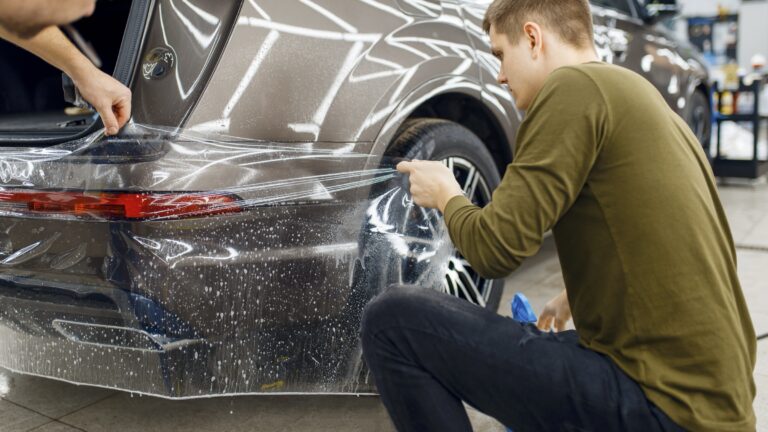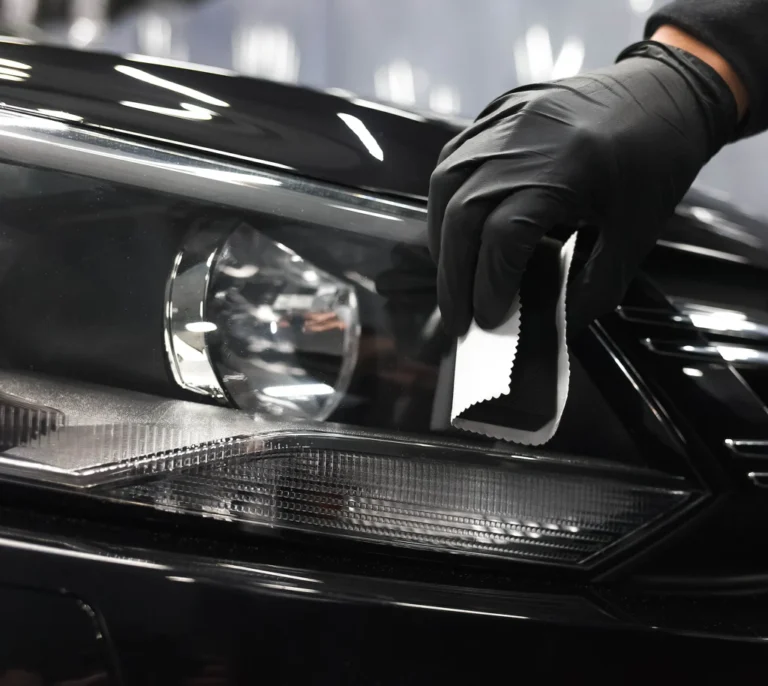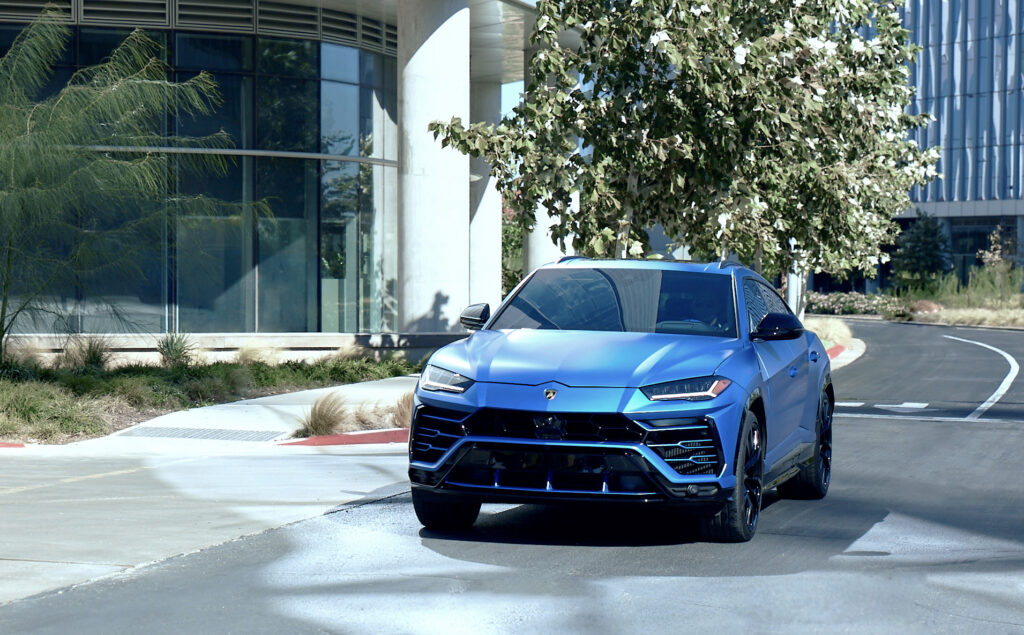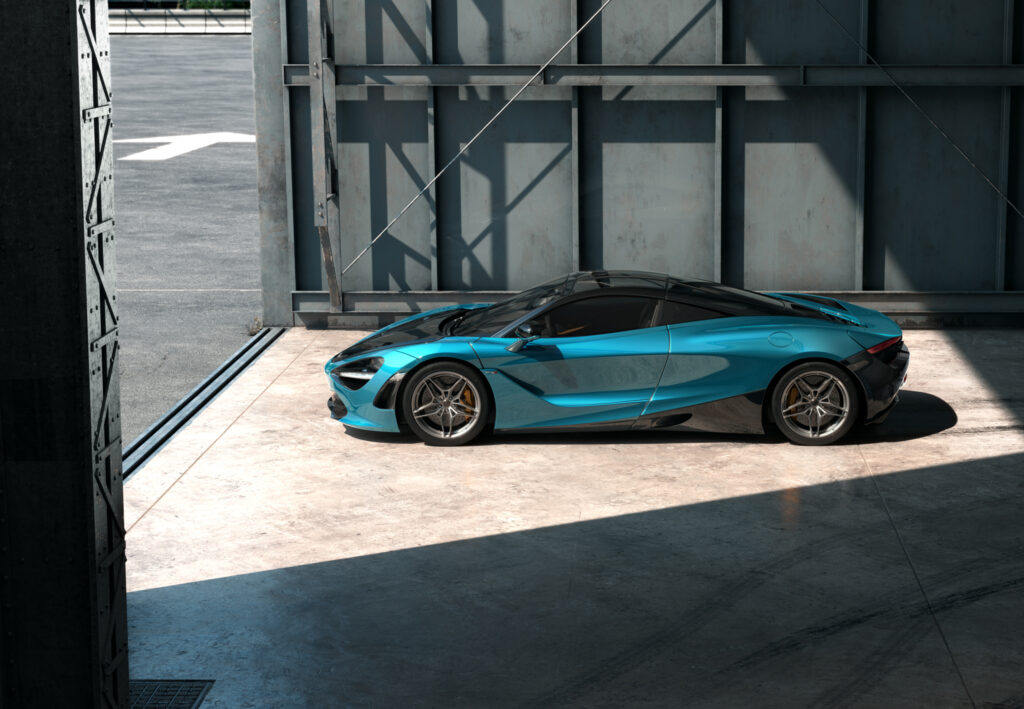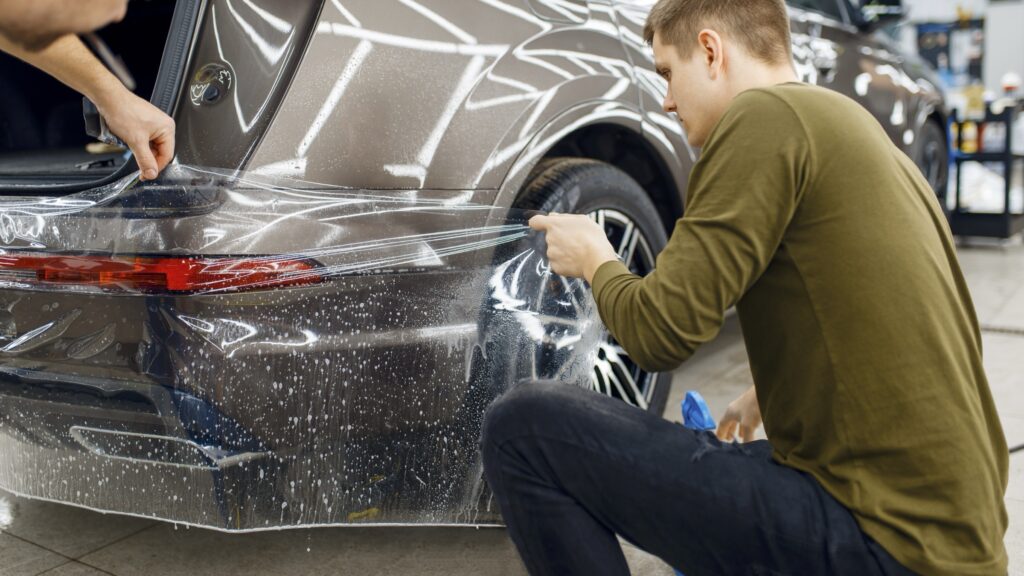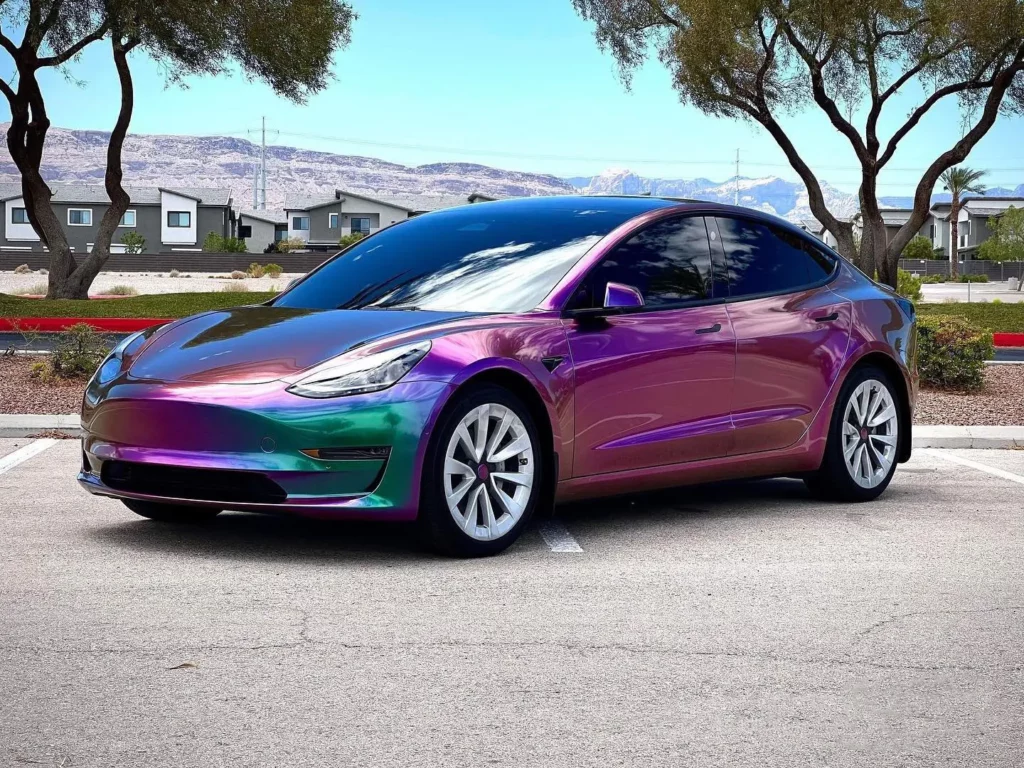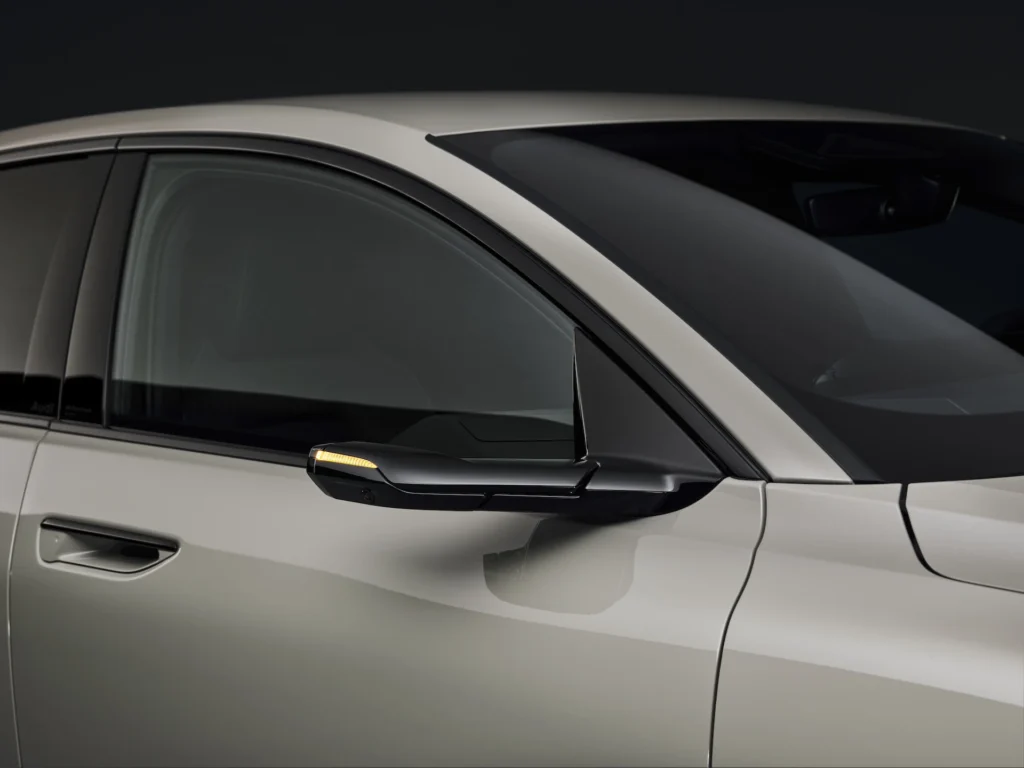If you are considering a nano ceramic coating for your car, Groupe Irenode has an extensive network of installers across the province of Quebec, including a distribution centre in Victoriaville.
Are you unfamiliar with this term and looking to learn more about nano ceramic coatings for cars and their price? Read on!

The Basic Principles of Nano Ceramic Coating
Also known as ceramic coating or ceramic protection, nano ceramic coating is a way to protect your vehicle’s body paint. As its name indicates, nanotechnology is used to create a protective layer that will be coated over the paint, making it more resistant to external aggressions.
Discover our Reaction paint protection films (PPF) for cars, a more advantageous alternative to nano ceramic coating. We explain why below ↓
The Application Process
The first step is a thorough cleaning of the vehicle’s exterior so that the paint is decontaminated and free of any residue. Next, the nano ceramic coating is applied with a special applicator, in a liquid form. After a short period, the excess product is wiped off to prevent accumulation. The coating needs a certain amount of time, anywhere from a few hours to several days, to cure completely.
The Science Behind Nano Ceramic Protection
The chemical compounds found in nano ceramic coating are generally silicon dioxide (SiO₂) and sometimes titanium dioxide (TiO₂). By penetrating the microscopic pores of the body paint, the product fills even the tiniest gaps, providing you with an exceptionally smooth coating.
The Advantages of Nano Ceramic Coating for your Vehicle
There are numerous advantages to opting for a nano ceramic treatment for your car; here are a few:
Protecting Paint From Scratches and Contaminants
Nano ceramic coating protects your vehicle’s body paint from external aggressions, such as minor scratches and environmental contaminants (insects, bird droppings, tar, etc.).
Enhanced Resistance to UV Rays and Harsh Weather
This type of coating protects your vehicle’s exterior from UV rays and prevents the paint from fading. It is also more resistant to harsh weather conditions than other types of protection, such as wax or sealants.
Easy Maintenance and Prolonged Durability
Designed to last for several years ‒ contrary to wax, which lasts only a few months‒ nano ceramic coating does not dissolve when washed. Moreover, the product is hydrophobic, meaning that it repels water and makes cleaning easier.
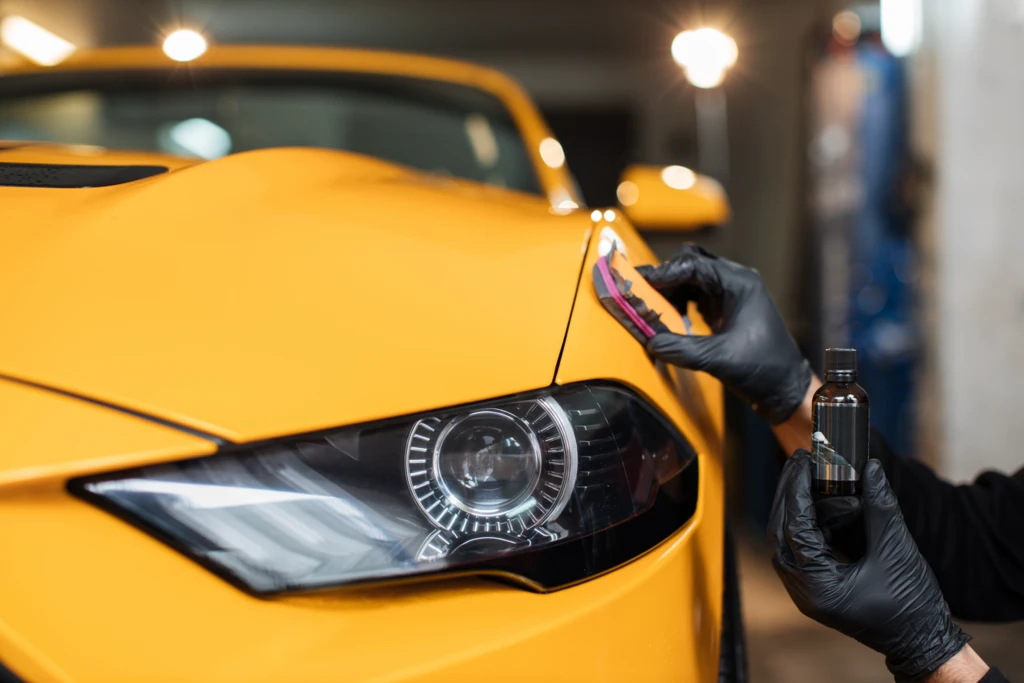
Comparing Nano Ceramic Coating With Other Types of Paint Protection
Nano ceramic coating is not the only available product when it comes to paint protection. But how does it compare to others?
Nano Ceramic Coating vs. Paint Protection Films (PPF)
The nano ceramic coating and paint protection films (PPF) are two popular options to protect a car’s body paint and integrity, but each has its unique advantages. Nano ceramic coating simplifies maintenance in addition to offering protection: water beads naturally, limiting the buildup of dirt. However, unlike a PPF, it does not shield against impacts from stones and does not have regenerative or self-healing properties.
On the other hand, a paint protection film, often made of vinyl or polyurethane, provides remarkable resistance against scratches and chips caused by stones. This durable barrier, which can last between 5 and 10 years, protects the paint from damage caused by road debris. When lightly scratched, it can even “repair” itself by returning to its original form. However, water will not bead as it will with a nano ceramic coating, and this solution is generally more expensive.
Our Reaction Paint Protection Film (PPF), the Best of Both Worlds
The Reaction PPF paint protection film combines the advantages of a nano ceramic coating and a traditional paint protection film for optimal protection. Thanks to the TetraShield technology, it incorporates the superhydrophobic properties of a ceramic coating, allowing water to bead quickly and wash away dirt. It is also 25% more resistant and can regenerate or self-heal minor scratches. This innovative product offers unparalleled durability, backed by a 12-year limited warranty for exceptional peace of mind.
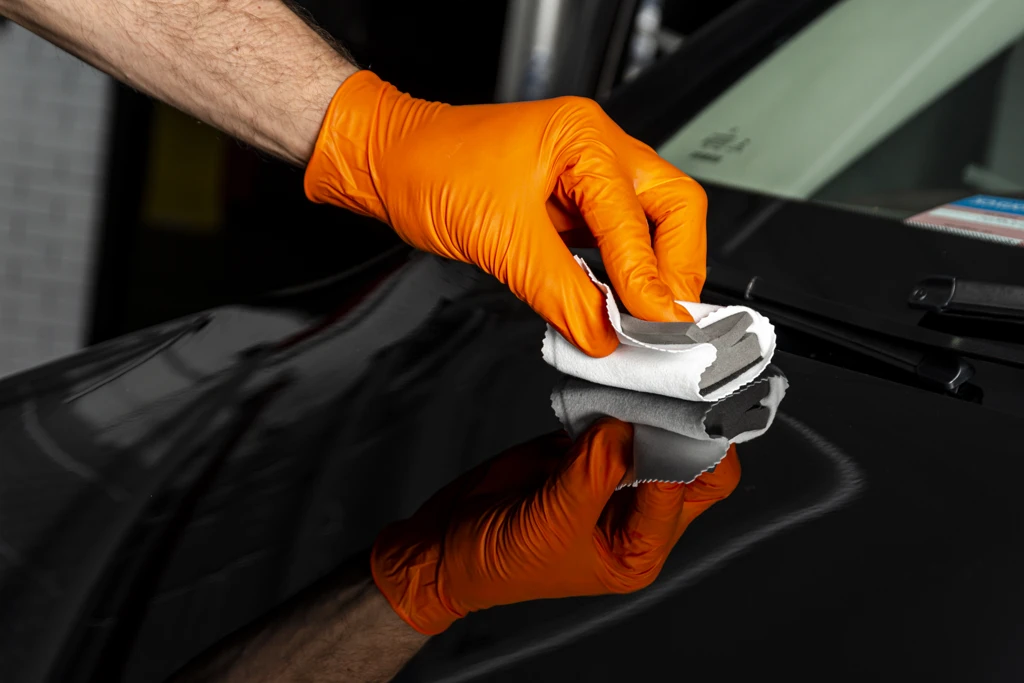
Nano Ceramic Coating vs. Traditional Car Wax
Are you torn between wax and a nano ceramic coating? Here are some of the advantages that each of these body protection options has to offer:
Wax
- Either natural or synthetic
- Forms a temporary protective layer
- Lasts between 1 and 3 months and slowly dissolves with washes
- Requires regular reapplication
- Offers basic protection against environmental elements
- Lesser effectiveness against minor scratches and chemicals
- Generally less expensive than nano ceramic coating, but can become more expensive when frequent applications are required
Nano Ceramic Coating:
- Composed of nanoparticles (SiO₂ or TiO₂)
- Utilizes nanotechnology to create a long-lasting protective layer
- Provides protection that lasts between 1 and 5 years
- Resistant to chemicals, UV rays, minor scratches, and environmental contaminants
- Requires less maintenance than wax treatments
- Has hydrophobic properties
- Requires more complex preparation and application than wax
- Higher initial cost but increased longevity makes it advantageous in the long run
Costs of a Nano Ceramic Coating: is it a Good Investment?
The price for nano ceramic coating can vary significantly (generally between $500 and $2,000) depending on the selected coating and the size of the area that needs to be covered (a subcompact will cost less to cover than a full-size SUV!).
Moreover, compared to waxes, nano ceramic coating is more expensive, but it can prove to be more economical than paint protection films. Since nano ceramic coatings last for a far longer time than the protection offered by traditional wax, it might be a more advantageous option in the long run, especially since it requires less maintenance.
Furthermore, by helping protect your vehicle’s body paint and integrity from external damage, the nano ceramic coating could also positively impact your vehicle’s resale value.

Maintenance Required After the Application of a Nano Ceramic Coating
Although maintaining a nano ceramic coating is relatively simple, certain rules must be followed after it has been applied. It is recommended to allow the treatment to cure (up to 48 hours depending on the product) to ensure complete adherence to the paint’s surface.
In addition, you should make it a habit to use cleaning products that are specifically designed for nano ceramic coatings and opt for microfibre gloves rather than brushes, which could scratch the coating. You should also pay special attention to drying in order to avoid water spots.
Finally, it is important to inspect the state of the nano ceramic coating regularly, for any signs of discoloration or delamination, so that any damage can be addressed promptly.

